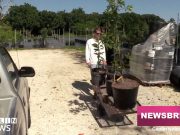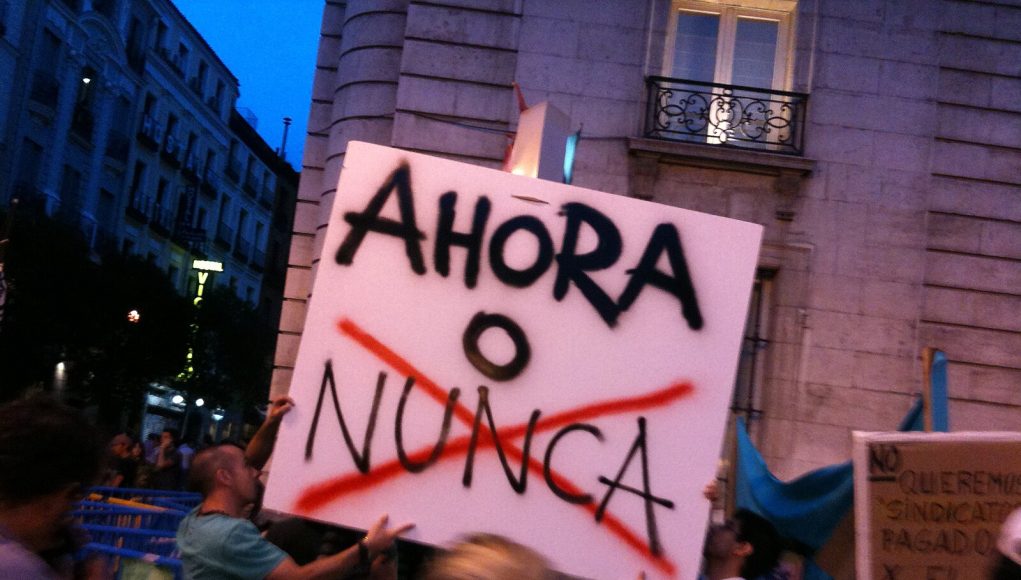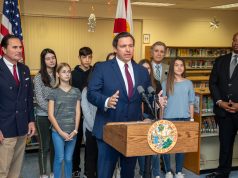South Florida is one of the world’s largest cultural and media capitals. Yet, with all the content pumped out of the region, it leaves behind a big chunk of its people: Spanish speakers.
This is about two-thirds of the population. Despite this, the language is largely undersold and underrepresented, which makes it a prime target for misinformation – especially in radio.
In American discourse, misinformation and disinformation are important issues, and social media is among the factors. This is particularly true among Spanish-speaking communities – but add a language barrier and general lack of oversight, and havoc reigns.
“What’s sad is that we’re seeing the Latino community revert to the kind of political discourse they left in Latin America,” said WLRN Americas Editor Tim Padgett. “This very polarized, zero-sum, us against them, style of discourse.”
Spanish-speaking households in the United States were 12% more dependent on platforms such as YouTube for their news, at 48% compared to English-speaking households at 36%, according to a 2022 study by the National Association of Latino Elected and Appointed Officials and the Brookings Institution. Moreover, the University of Houston in 2022 found that more than 40% of Latinos believe in unfounded conspiracy theories, including that the 2020 election was stolen.
Alejandro Alvarado, chair of the Spanish language journalism master’s program at Florida International University, said there are three kinds of false information prevalent in the media: Misinformation, disinformation and “mal-information.”
“Disinformation is propagandistic and has the intention to divide and harm,” Alvarado said. “Misinformation is simply wrong information, false information. And [mal-information] is when you don’t know – it’s ignorance.”
This landscape of fake news in the Latino community stems from the complicated political history many Latino immigrants in South Florida grew up in. Cubans, who began arriving en masse to Miami in the 1950s, fear communism and any rhetoric that seems to belong to the political left. So do Venezuelans and Colombians, who also blame the left for the instability and chaos in their native countries. As such, the buzzwords “communism” and “socialism” churn in the political and misinformation machines.
“The talk shows are the most popular here among the audience in South Florida, and they won’t hear anything else,” said Alvarado. “They think Democrats are communists, they think they’re traitors and they won’t hear anything else.”
WLRN’s Broward County field reporter Gerard Albert III points to the language barrier as one of the reasons false information is likely to flourish.
Albert said that in the United States, where news literacy is already weak, not speaking English, or not speaking it well, animates people to get their news from Spanish-language radio or Facebook, in which “there’s not a lot of fact-checking going on, there’s no one to… offer another opinion from outside the sideline.”
This lack of alternatives to reliable English-language sources is a key contributor to the spread of lies and half-truths.
“It’s predominantly English-language media, so there’s not as much media in Spanish, and there are fewer outlets,” said Sergio Bustos, WLRN Vice President for News. “So chances are fewer that people can get to that information.”
Alvarado identifies another culprit in the spread of misinformation: profit. So long as people are tuned in and listening, they have less of a reason to vet this information, he says.
“The media in South Florida and in the rest of the country are very happy with this situation because people hear them, they follow them, and they sell a lot of advertising,” said Alvarado. “Easy as that.”
Platforms such as Facebook fail to flag misinformation in Spanish at a rate of 70%, compared to 29% in English, according to research from activist organization Avaaz in 2022.
“Social media now has a huge influence because lots of people now rely on it,” said Bustos. “All of this is what we’re all combating in legacy media: Miami Herald, TV stations, the Miami New Times, and [WLRN].”
WLRN content producer Sherrilyn Cabrera said she sees how misinformation spreads through those unreliable radio channels, which don’t practice ethics standards the way WLRN does. As a producer, Cabrera’s duties are mostly behind the scenes; she spends all day in the newsroom vetting information before it goes on the air.
“A lot of misinformation is spread on those stations, and that’s what a lot of our family members are listening to,” said Cabrera. “We see the effects everyday.”
The lack of greater radio oversight also enables the problem. Many stations have avoided the oversight of government organizations like the Federal Communications Commission due to the lack of interest in what goes on in minority communities, said Padgett.
For example, the FCC failed to regulate Spanish-language lying in coverage of Elián González, the five-year-old Cuban migrant found off the coast of Florida 25 years ago and sent back to the island.
“There were things being said that were outright slanderous, libelous or outright dangerous,” said Padgett. “If it had been said on English language media, the FCC would have been all over it. That’s starting to change a little bit, but a lot of people don’t say enough. In a community like Miami, where the population is majority Latino, you would think the FCC would realize [it] should be monitoring Spanish language media.”
The blazing spread of false information may have also soured voters from civic engagement altogether, according to WLRN’s Bustos.
“I think, sadly, [misinformation] may be turning voters off as opposed to turning voters into action. It’s having more of a negative effect, making people more cynical about politics… that’s where I think the biggest impact is…I think in general, people are more cynical these days than they’ve ever been,” said Bustos.
Despite the challenges, journalists and journalism organizations are unwavergly committed to their responsibility of getting the facts out, and many organizations are specifically countering misinformation as their end goal.
“We try not to re-report things that are out there. When we pursue stories, we’re trying to go after the truth and accuracy by all means,” Bustos said, adding that one of WLRN’s strategies to combat misinformation is its partnership with Politifact – the station publishes its material on the website.
Alvarado also named a number of newsrooms throughout the United States dedicated to combatting misinformation, including Factchequeado and elDetector, platforms dedicated to managing misinformation in Spanish-language media based in Miami; Documented, a New York-based newsroom focused on immigration and immigrant coverage, including housing and workers’ issues; and Radio Poder, a Homestead-based radio station run by immigrant and workers’ rights organization WeCount, dedicated to serving the migrant worker community in Homestead.
“Information is beneficial for society because you understand what’s going on, you understand the different parts, and it gives you the chance for dialogue,” said Alvarado. “So that’s the beauty of information in its splendor.”
Alvarado stated that disinformation has severe effects on American society. Most notably, it promotes widespread violence, like the January 6 riot, as well as division and anger on national and local levels.
“It’s propaganda with the intention to destroy institutions, to make harm to the community,” said Alvarado

































